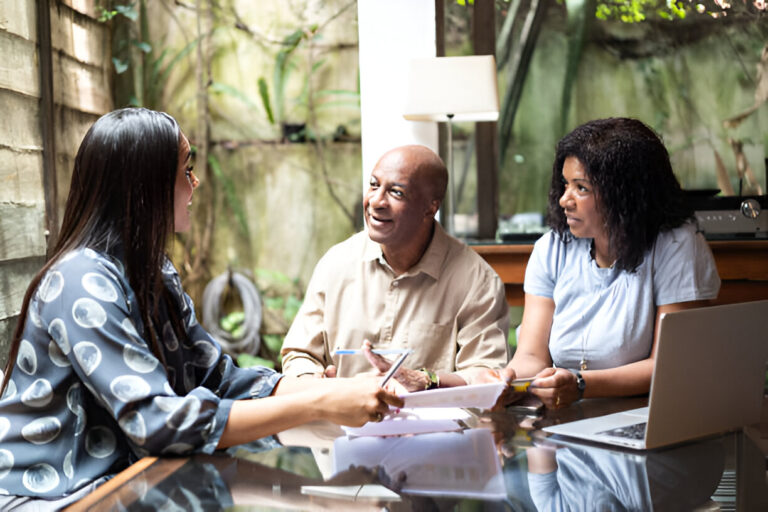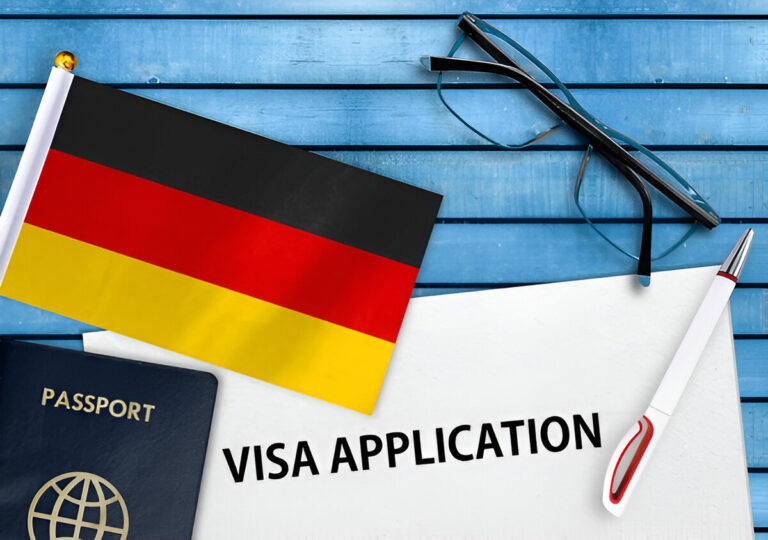South Korea Home Insurance for Immigrants – Live in South Korea
Moving to a new country like South Korea is an exciting venture filled with opportunities for personal growth, career advancement, and cultural experiences. However, alongside the excitement come various responsibilities, one of which is ensuring that your new home is protected.
For immigrants, understanding and securing the right home insurance is crucial to safeguarding your property and belongings. Imagine settling into your cozy Seoul apartment, only to face unexpected damages from natural disasters, theft, or accidents without adequate coverage.
Why Home Insurance is Essential for Immigrants in South Korea
South Korea boasts a robust economy, advanced infrastructure, and a high standard of living, making it an attractive destination for immigrants. Whether you’re moving for work, study, or to join family, securing home insurance is a fundamental step in establishing your new life. Here’s why home insurance is indispensable for immigrants in South Korea:
1. Protection Against Financial Losses
Home insurance provides financial protection against unexpected events that can cause significant damage to your property or belongings. Natural disasters like typhoons, floods, or earthquakes are common in South Korea, and having insurance ensures you won’t bear the full brunt of repair costs or replacements.
2. Legal Requirements and Lease Agreements
While not always mandatory by law, many landlords in South Korea require tenants to have home insurance as part of the lease agreement. This insurance protects both the tenant and the landlord from potential damages, ensuring a smoother rental experience and safeguarding against disputes.
3. Peace of Mind
Knowing that your home and possessions are insured allows you to focus on settling into your new environment without constant worry about potential risks. This peace of mind is invaluable, enabling you to fully enjoy your experience in South Korea.
4. Coverage for Personal Belongings
Home insurance doesn’t just protect the physical structure of your home; it also covers your personal belongings. From electronics and furniture to valuable items like jewelry and important documents, insurance ensures that your possessions are safe from theft, damage, or loss.
Types of Home Insurance Available in South Korea
Understanding the different types of home insurance available can help you choose the coverage that best suits your needs. South Korea offers a variety of insurance options tailored to the diverse needs of immigrants.
1. Building Insurance
Building insurance covers the physical structure of your home against damages caused by natural disasters, fire, vandalism, and other unforeseen events. This type of insurance is essential for homeowners and may also be required by landlords for rental properties.
2. Contents Insurance
Contents insurance protects your personal belongings within the home. This includes furniture, electronics, clothing, and other valuables. It ensures that you can replace or repair items that are damaged, stolen, or lost due to covered events.
3. Comprehensive Home Insurance
Comprehensive home insurance combines building and contents insurance into a single policy, offering extensive protection for both the structure of your home and your personal belongings. This all-in-one solution is ideal for those seeking thorough coverage and convenience.
4. Landlord Insurance
If you’re an immigrant who owns property and plans to rent it out, landlord insurance is crucial. It covers damages to the property caused by tenants, loss of rental income due to property damage, and liability claims if someone is injured on your property.
5. Tenant Insurance
Tenant insurance is designed for renters, providing coverage for personal belongings and liability. While building insurance is typically the landlord’s responsibility, tenant insurance ensures that your possessions are protected and that you are covered in case of accidental damage or injury.
Legal Requirements for Home Insurance in South Korea
While home insurance is not always legally mandatory for all residents, certain situations and agreements make it essential. Understanding these requirements can help you stay compliant and avoid potential legal complications.
1. Lease Agreements
Many landlords in South Korea require tenants to have home insurance as part of the rental agreement. This requirement protects both parties from potential damages and liabilities. Before signing a lease, ensure that you understand the insurance requirements and have the necessary coverage in place.
2. Mortgage Requirements
If you’re purchasing a home in South Korea with a mortgage, your lender will likely require you to have building insurance. This insurance protects the lender’s investment by ensuring that the property is covered against significant damages.
3. Natural Disaster Regulations
South Korea is prone to natural disasters such as typhoons and earthquakes. While not always mandatory, having home insurance that covers natural disasters is highly recommended to protect your property and finances from potential devastation.
Choosing the Right Insurance Provider
Selecting a reliable insurance provider is pivotal to ensuring you receive the coverage you need. Here are some factors to consider when choosing a home insurance provider in South Korea:
1. Reputation and Reliability
Research providers with strong reputations and positive customer reviews. Established companies with a long-standing presence in the South Korean market are more likely to offer dependable services and honor claims promptly.
2. Coverage Options
Ensure the provider offers comprehensive coverage that aligns with your specific needs. Assess whether they cover essential aspects such as building structure, personal belongings, liability, and additional benefits like emergency repairs or temporary accommodation.
3. Cost and Value
Compare premiums and understand what each policy covers. While it’s tempting to choose the cheapest option, it’s crucial to balance cost with the benefits provided. A more expensive policy might offer better coverage, lower deductibles, and additional services that provide greater overall value.
4. Customer Support
Responsive and multilingual customer support can be invaluable, especially when navigating a new country’s systems. Ensure that your insurance provider offers support in your preferred language and has a reputation for helpful, efficient service.
5. Ease of Enrollment
Providers that offer straightforward enrollment processes, preferably online, can save you time and hassle. Look for insurers that provide clear instructions, user-friendly websites, and quick approval times.
Cost Factors and How to Save on South Korea Home Insurance
Understanding what influences insurance costs can help you manage your budget effectively. Here are the primary factors affecting premiums and strategies to save on your home insurance in South Korea:
Factors Influencing Cost
- Location: Homes in urban areas like Seoul may have different premium rates compared to those in rural regions. Additionally, areas prone to natural disasters may incur higher costs.
- Property Value and Size: Larger and more valuable properties generally require higher premiums to cover the increased risk and potential repair costs.
- Coverage Level: Comprehensive policies that offer extensive protection cost more but provide greater peace of mind. Basic policies with limited coverage are cheaper but may leave gaps in protection.
- Deductibles: Higher deductibles can lower your premium, but ensure you can cover the out-of-pocket costs if needed.
- Security Measures: Homes equipped with security systems, fire alarms, and other protective measures may qualify for discounts.
- Claims History: A history of frequent claims can increase your premium. Maintaining a good claims record helps keep costs down.
Tips to Save
- Compare Multiple Quotes: Use comparison websites to evaluate different providers and policies. This allows you to identify the best coverage at the most affordable price.
- Bundle Policies: Combining home insurance with other types of insurance, such as auto or health insurance, can lead to discounts.
- Maintain a Good Credit Score: A good credit score can sometimes result in lower premiums, as it indicates financial responsibility.
- Install Security Features: Adding security systems, smoke detectors, and other safety features can reduce your premium by lowering the risk of damage or theft.
- Review Annually: Regularly reviewing and adjusting your policy ensures you’re not overpaying for unnecessary coverage or missing out on new discounts and benefits.
What’s Included in South Korea Home Insurance
Comprehensive home insurance should cover a range of potential issues. Here’s a breakdown of typical coverage components:
1. Building Coverage
- Structural Damage: Covers repairs or rebuilding costs if your home is damaged by fire, flood, earthquake, or other covered events.
- Loss of Use: Provides compensation for temporary accommodation if your home becomes uninhabitable due to covered damages.
2. Contents Coverage
- Personal Belongings: Covers theft, damage, or loss of personal items like furniture, electronics, clothing, and valuable possessions.
- Liability Protection: Protects you if someone is injured on your property or if you accidentally cause damage to someone else’s property.
3. Additional Coverage
- Natural Disasters: Extra coverage for specific natural disasters such as earthquakes, which may not be included in standard policies.
- Home Maintenance Services: Some policies offer services like emergency repairs, cleaning, or pest control.
- Identity Theft Protection: Protects against financial loss due to identity theft, a growing concern in today’s digital age.
4. Optional Add-Ons
- Accidental Damage: Covers unintentional damage to your home or belongings, providing extra security beyond standard coverage.
- Valuable Items: Additional coverage for high-value items like jewelry, artwork, or expensive electronics that exceed standard policy limits.
- Legal Assistance: Offers legal support in case of disputes related to your property or insurance claims.
Common Mistakes to Avoid When Getting Home Insurance in South Korea
Securing the right insurance requires careful consideration. Avoid these common pitfalls to ensure you get the coverage you need without unnecessary complications:
1. Underestimating Coverage Needs
Opting for minimal coverage to save costs can leave you vulnerable to significant financial risks. Assess your needs thoroughly by considering factors such as the value of your home, personal belongings, and potential risks in your area.
2. Ignoring Policy Exclusions
Every policy has exclusions—conditions or situations that are not covered. Reading the fine print to understand what is excluded can prevent surprises
3. Delaying Enrollment
Some insurance policies require you to enroll before moving into a new home. Delaying enrollment can result in gaps in coverage, leaving you exposed to risks. It’s advisable to secure your insurance as soon as your plans are confirmed to ensure continuous protection from the moment you settle into your new home.
4. Not Disclosing Pre-existing Conditions
Failing to inform your insurer about pre-existing conditions or existing damages can lead to denied claims or policy cancellations. Transparency with your insurer ensures that your coverage accurately reflects your situation and prevents complications when you need to file a claim.
5. Assuming All Policies Are the Same
Different insurance providers offer varying levels of coverage and benefits. Assuming that all home insurance policies are the same can lead to inadequate protection. Always compare policies to find one that best fits your specific needs and circumstances.
How to Apply for South Korea Home Insurance
Navigating the application process is straightforward if you follow these steps:
1. Assess Your Needs
Determine the type and level of coverage you require based on factors such as your property’s location, value, size, and the value of your personal belongings. Consider any specific risks associated with your area, such as susceptibility to natural disasters.
2. Research Providers
Identify reputable insurance companies that offer home insurance policies tailored for immigrants in South Korea. Look for providers with strong customer reviews, comprehensive coverage options, and reliable customer support.
3. Gather Necessary Documentation
Prepare documents such as identification, proof of residency, property details, and any existing documentation related to your home. Having all necessary paperwork ready can expedite the application process and prevent delays in securing your coverage.
4. Compare Policies
Use comparison tools to evaluate different policies based on coverage, cost, and customer reviews. Assess the benefits and limitations of each policy to determine which one offers the best value for your needs. Pay attention to coverage limits, exclusions, and additional benefits.
5. Complete the Application
Fill out the application form accurately, ensuring all information is correct to avoid delays or issues with your coverage. Provide honest and detailed information about your property’s condition and the value of your personal belongings to ensure your policy is valid.
6. Review and Confirm
Carefully review the policy terms and conditions before confirming your purchase. Ensure you understand the coverage details, exclusions, and claim procedures. Don’t hesitate to ask questions or seek clarification from the insurer if needed.
7. Make Payment
Complete the payment process through the insurer’s secure payment gateway. Choose a payment method that is convenient and secure, such as credit card, bank transfer, or online payment platforms.
8. Receive Confirmation
Upon successful payment, you’ll receive policy documents and proof of insurance. Keep these handy for future reference, whether digitally or in printed form. Having easy access to your policy details can be crucial in emergencies.
Conclusion
Embarking on a new life in South Korea is an exciting journey filled with possibilities. Securing the right home insurance is not just a practical necessity but a crucial step in safeguarding your property, belongings, and financial well-being. Take the time to assess your needs, compare your options, and invest in a policy that aligns with your goals – your future in South Korea deserves nothing less.





